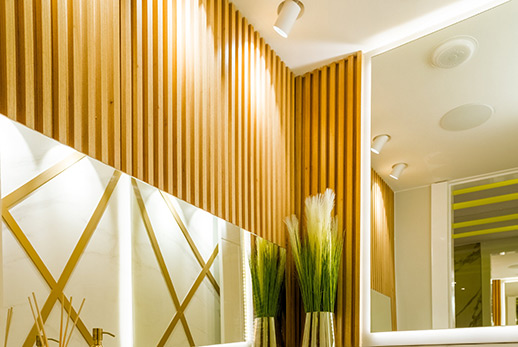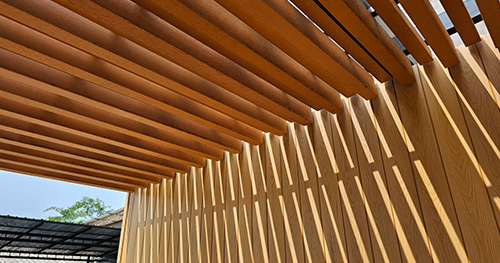How to Choose the Best Slip-Resistant Composite Decking
Slip resistance plays a crucial role in keeping your decking safe and comfortable. Imagine enjoying a sunny day on your deck without worrying about slips and falls. That's where slip-resistant composite decking comes in. Did you know that over 200,000 people get injured in swimming pool-related accidents each year, with many due to slips and falls? A slip-resistant surface can significantly reduce these risks. MATECO WPC offers excellent options for those looking to choose the best slip-resistant composite decking. Their products ensure you can enjoy your outdoor space with peace of mind.
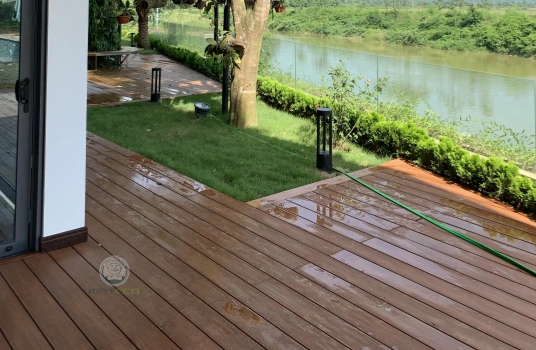
Table of Contents
Choose the Best Slip-Resistant Composite Decking
When you're on the hunt for the best slip-resistant composite decking, understanding what makes a deck slip-resistant is crucial. Let's dive into the key factors that contribute to this essential feature.
1) What Makes Decking Slip-Resistant?
Surface Texture and Finish
The texture and finish of your decking play a significant role in slip resistance. A rougher surface provides better grip, reducing the chances of slipping. MATECO WPC offers composite decking with specially designed textures that enhance traction. These surfaces undergo rigorous testing, like the PTV test, ensuring they meet high safety standards. So, when you choose a deck with the right texture, you're choosing safety.
Material Composition
The materials used in composite decking also affect its slip resistance. Decks made from non-organic materials resist mold and mildew growth, which can make surfaces slippery. MATECO WPC decks are often capped with synthetic materials, preventing moisture absorption and maintaining a safer surface. By selecting a deck with the right material composition, you ensure long-lasting slip resistance.
2) Importance of Slip Resistance in Different Climates
Slip resistance isn't just about the deck itself; it's also about how it performs in various weather conditions. Let's explore why this matters.
Wet and Humid Conditions
In wet and humid climates, decks can become slippery hazards. Composite decking, like that from MATECO WPC, is engineered to handle moisture effectively. Its moisture-resistant qualities prevent water from pooling, reducing slip risks. When you live in a rainy area, choosing a deck with these features ensures safety even during downpours.
Cold and Icy Conditions
Cold climates present their own challenges. Ice can form on decks, creating dangerous conditions. Composite decking with anti-slip properties helps mitigate these risks. MATECO WPC designs their products to maintain traction even in icy conditions. If you face harsh winters, opting for a deck with proven slip resistance in cold weather is a wise choice.
By understanding these factors, you can confidently choose the best slip-resistant composite decking for your needs. Whether you're dealing with rain or snow, selecting the right deck ensures a safer outdoor space for you and your loved ones.
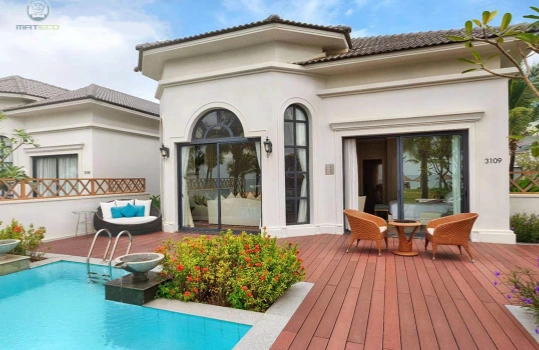
Key Factors to Consider
When choosing slip-resistant composite decking, several key factors can guide you to the best decision. Let's explore these important considerations.
Material Types
The type of material you choose for your decking significantly impacts its slip resistance and overall performance.
Wood-Plastic Composites
Wood-plastic composites (WPC) blend wood fibers with plastic, offering a durable and slip-resistant surface. These materials resist mold and mildew, which can make surfaces slippery. WPC decks often feature a textured finish, enhancing grip and safety. This combination of materials provides a reliable option for those seeking a balance between natural aesthetics and modern durability.
PVC and Other Synthetics
PVC and other synthetic materials offer another excellent choice for slip-resistant decking. These materials are non-porous, meaning they don't absorb water, which reduces slipperiness. PVC decking often includes a textured surface, providing extra traction. This makes it a great option for areas prone to wet conditions, ensuring safety without compromising on style.
Texture and Finish Options
The texture and finish of your decking play a crucial role in its slip resistance. Let's look at some popular options.
Embossed Patterns
Embossed patterns add depth and texture to your decking, improving slip resistance. These patterns create small grooves that enhance grip, making it safer to walk on, especially in wet conditions. Many composite decking brands offer a variety of embossed designs, allowing you to choose a style that complements your outdoor space while prioritizing safety.
Brushed Finishes
Brushed finishes provide another effective way to enhance slip resistance. This finish involves lightly brushing the surface of the decking, creating a subtle texture that improves traction. Brushed finishes are particularly beneficial in areas with high foot traffic, as they maintain their slip-resistant properties over time.
Installation Techniques
Proper installation techniques are essential for maximizing the slip-resistant properties of your decking.
Proper Spacing for Drainage
Ensuring proper spacing between decking boards allows for effective drainage, reducing the risk of water pooling on the surface. This simple technique helps maintain a dry and safe deck, even after heavy rain. By allowing water to drain efficiently, you minimize the chances of slips and falls.
Surface Treatments and Coatings
Applying surface treatments and coatings can further enhance the slip resistance of your decking. Chemical treatments, for instance, can improve the grip of the surface, making it safer to walk on. Regular maintenance of these treatments ensures that your deck remains slip-resistant over time, providing peace of mind for you and your family.
By considering these key factors, you can confidently select the best slip-resistant composite decking for your needs. Whether you prioritize material type, texture, or installation techniques, each choice contributes to creating a safe and enjoyable outdoor space.
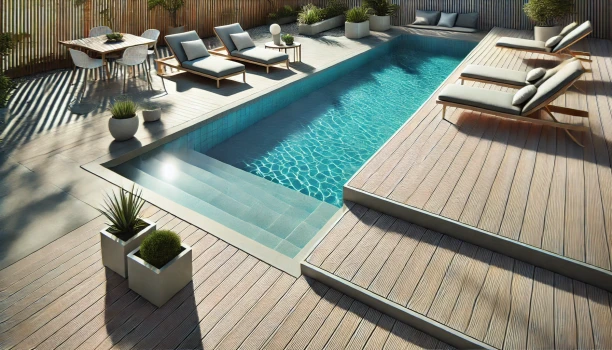
Comparing Composite Decking Materials
When you're choosing composite decking, it's essential to compare different materials. This helps you find the best option for your needs. Let's dive into the key aspects of evaluating slip-resistance features and understanding longevity and weather resistance.
1) Evaluating Slip-Resistance Features
Slip resistance is a crucial factor when selecting decking materials. You want a surface that keeps you safe, especially in wet conditions.
Traction Performance Analysis
Traction performance is all about how well a surface grips underfoot. Composite boards often excel in this area. They must achieve a Pendulum Test Value (PTV) of 36 to be considered slip-resistant. This ensures a good grip, reducing the risk of slips and falls. The texture and finish of composite boards play a significant role here. A well-designed texture enhances traction, making your deck safer to walk on.
Wear and Tear Comparison
Durability matters when it comes to decking. Composite materials typically outperform wood in terms of wear and tear. They resist mold, mildew, and other elements that can make surfaces slippery. Unlike wood, composite decking requires little maintenance, maintaining its slip-resistant properties over time. This makes it a reliable choice for those seeking long-lasting safety.
2) Longevity and Weather Resistance
Your decking needs to withstand various weather conditions. Let's explore how different materials hold up over time.
Durability Testing Results
Composite decking undergoes rigorous durability testing. These tests ensure that the material can withstand daily use and harsh weather. Compared to wood, composite materials show superior durability. They don't warp, crack, or splinter, maintaining their structural integrity. This durability translates to a longer lifespan, providing you with a safe and stable surface for years.
Weather Endurance Studies
Weather endurance is another critical factor. Composite decking performs well in diverse climates. It resists moisture, preventing water from seeping in and causing damage. This makes it an excellent choice for areas with heavy rain or humidity. In cold climates, composite decking maintains its slip-resistant properties, even in icy conditions. This versatility ensures that your deck remains safe and functional, no matter the weather.
By evaluating these features, you can confidently choose the best composite decking material for your needs. Whether you prioritize slip resistance, durability, or weather endurance, each factor contributes to creating a safe and enjoyable outdoor space.
Practical Tips for Choosing the Best Option
Choosing the best slip-resistant composite decking involves more than just picking a product off the shelf. You need to consider your specific needs and consult with professionals to ensure you make the right choice. Let's explore these practical tips to guide you.
Assessing Your Specific Needs
Understanding your unique requirements is the first step in selecting the perfect decking.
Usage and Foot Traffic
Think about how you plan to use your deck. Will it host large gatherings, or is it a quiet retreat for family? High foot traffic areas demand more durable and slip-resistant materials. Composite decking, known for its durability, can handle frequent use without compromising safety. If your deck sees a lot of action, opt for materials that maintain their slip resistance over time.
Aesthetic Preferences
Your deck should reflect your style. Consider the look you want to achieve. Composite decking offers a variety of textures and finishes, allowing you to choose the best option that complements your outdoor space. Whether you prefer a natural wood look or a modern design, there's a slip-resistant composite decking that fits your aesthetic. Remember, safety doesn't mean sacrificing style.
Conclusion
Choosing the right slip-resistant composite decking ensures a safe and enjoyable outdoor space. Here's a quick recap:
Evaluate Your Needs: Consider how you'll use your deck. Think about foot traffic and weather conditions. Composite decking offers excellent slip resistance, especially in wet conditions, making it a safer choice than traditional wood.
Seek Professional Advice: Consult experts to guide you in selecting the best materials and installation techniques. Their insights can help prevent slips and falls.
Trust MATECO WPC: Known for their reliable slip-resistant solutions, MATECO WPC provides peace of mind with their high-quality decking options.
By focusing on these aspects, you create a deck that's both beautiful and safe for everyone.
If you are looking for a WPC manufacturer, MATECO will be your best choice.
WhatsApp: +86-13380085620
Email: info@matecowpc.com





